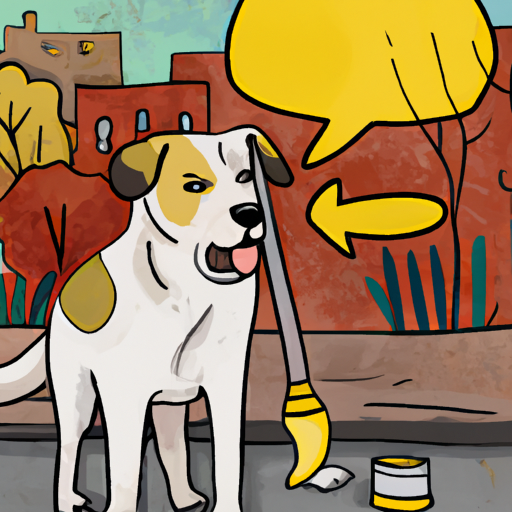“`markdown
Why Do Dogs Mark Their Territory?
Understanding Your Canine Companion’s Behavior
You’ve probably observed your dog lifting its leg on every fire hydrant, tree, or post during your walks. You may have even noticed them doing this in your home. This behavior is known as marking, and it’s a crucial way dogs communicate with each other. Here’s what you need to know to understand your pet’s actions better.
-
Chemical Communication: Dogs have a much stronger sense of smell than humans. They use their nose to understand their environment and communicate with other dogs. Urine marking is one way your dog sends messages to other dogs, informing them about their presence, their reproductive status, and even their mood.
-
Claiming Territory: Dogs are territorial animals. When your dog marks a spot, they’re essentially saying, “This is my turf.” It’s a warning to other dogs to stay away.
The Science Behind Marking
The act of marking is deeply rooted in a dog’s biology and instincts. Your dog’s urine contains pheromones, chemical signals that convey a range of information to other dogs who come across the scent. These pheromones can tell another dog whether the marker is male or female, how healthy they are, and more.
-
Dominance: Dominance plays a significant role in marking behavior. The higher a dog perceives its status, the more likely it is to mark its territory. This behavior is more common in male dogs, but females can also mark, especially if they’re in heat.
-
Anxiety: Stress or anxiety can trigger marking behavior. Changes in the household, such as moving, bringing in new pets or family members, or a change in your dog’s routine, can lead to anxiety-induced marking.
How to Discourage Marking
If your dog’s marking behavior becomes problematic, especially indoors, there are steps you can take to discourage it:
-
Neuter/Spay: Neutering or spaying your dog can significantly reduce marking behavior, especially if done before they reach sexual maturity.
-
Clean Marked Areas: Use a pet-friendly enzymatic cleaner to thoroughly clean areas your dog has marked. This will help remove the scent and discourage re-marking.
-
Change your Dog’s Perception of Marked Areas: If your dog repeatedly marks a specific area, try changing their association with that area. For example, you could feed them their meals there or play with them in that spot.
Understanding Marking vs. Inappropriate Elimination
It’s important to differentiate between marking and inappropriate elimination. While marking usually involves small amounts of urine sprayed on vertical surfaces, inappropriate elimination is when your dog fully empties their bladder on horizontal surfaces. It can be due to medical issues or behavioral problems. If you’re unsure, it’s best to consult with a vet.
| Marking | Inappropriate Elimination |
|---|---|
| Small amounts of urine | Full bladder’s worth of urine |
| Usually on vertical surfaces | Usually on horizontal surfaces |
| More common in intact males | Can occur in any dog |
Frequently Asked Questions (FAQ)
Q: Why does my neutered male dog still mark?
A: Neutering reduces the likelihood of marking, but it doesn’t eliminate the behavior entirely. Your dog may still mark due to dominance or anxiety issues.
Q: Is marking a sign of a medical problem?
A: While marking is usually a behavioral issue, excessive marking can indicate a urinary tract infection or other health problems. If you’re concerned, it’s best to consult your vet.
Q: Can I train my dog to stop marking?
A: Yes. Consistent training, neutering/spaying, and managing anxiety can all help reduce marking behavior.
“`



